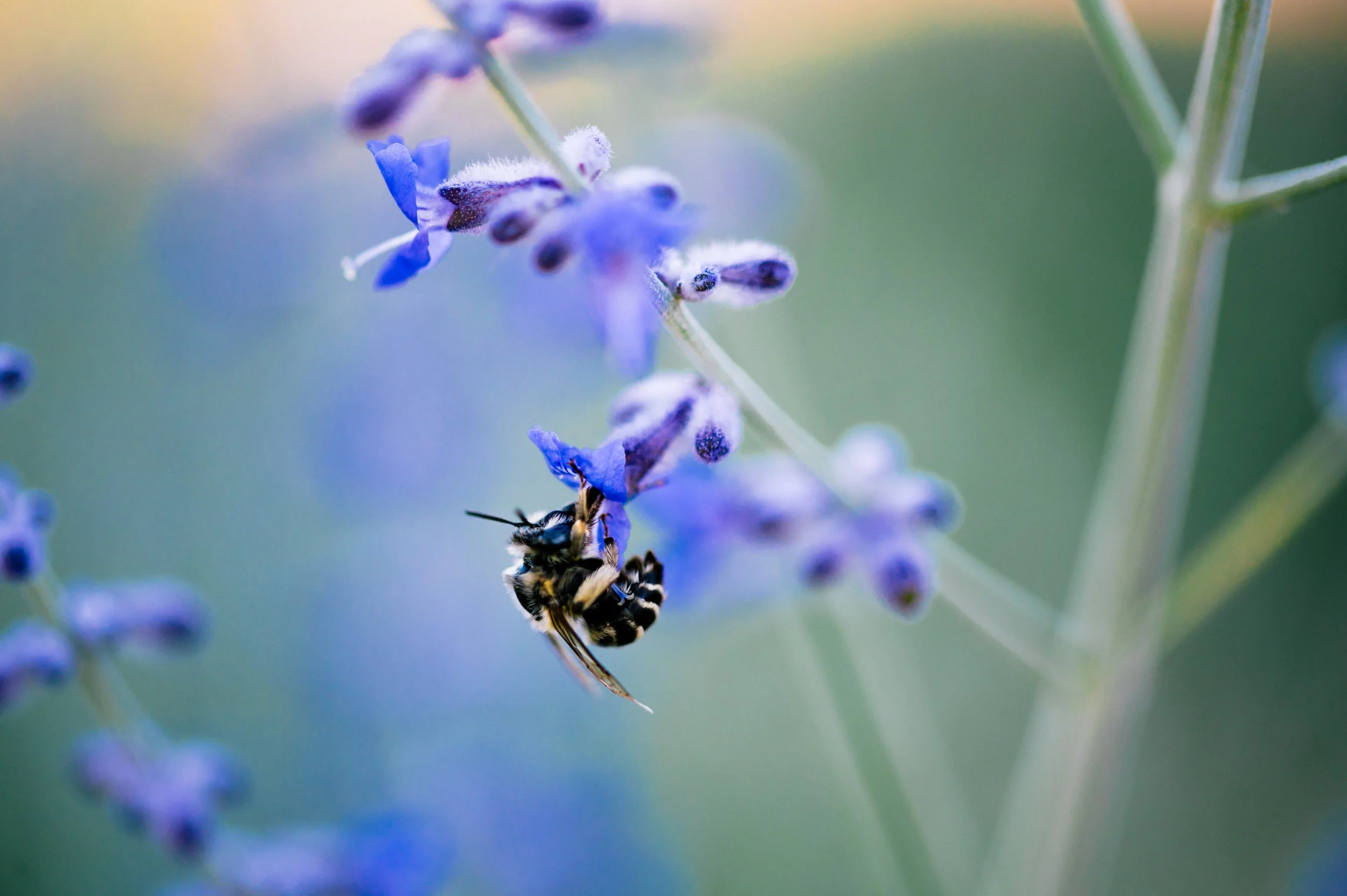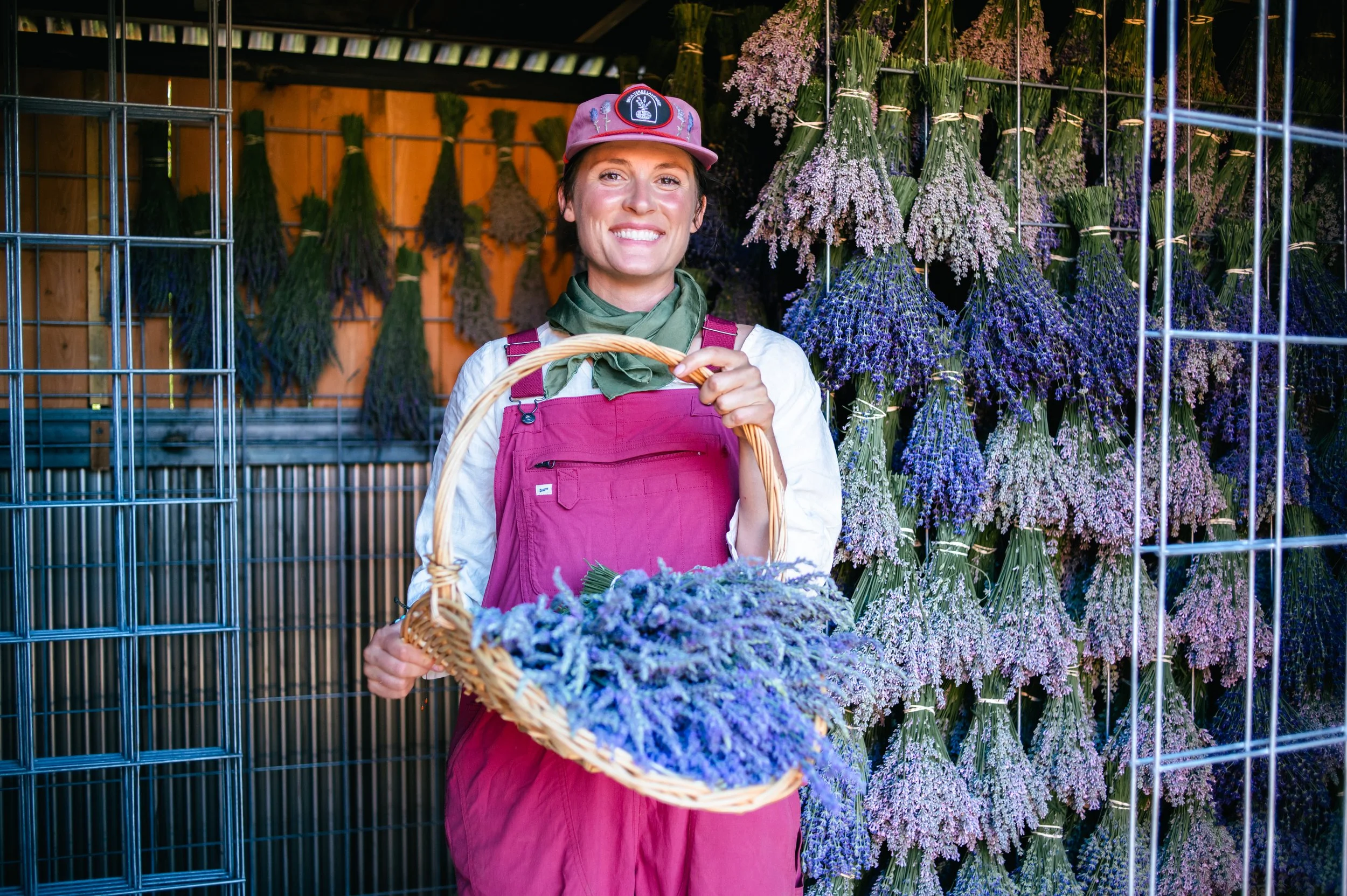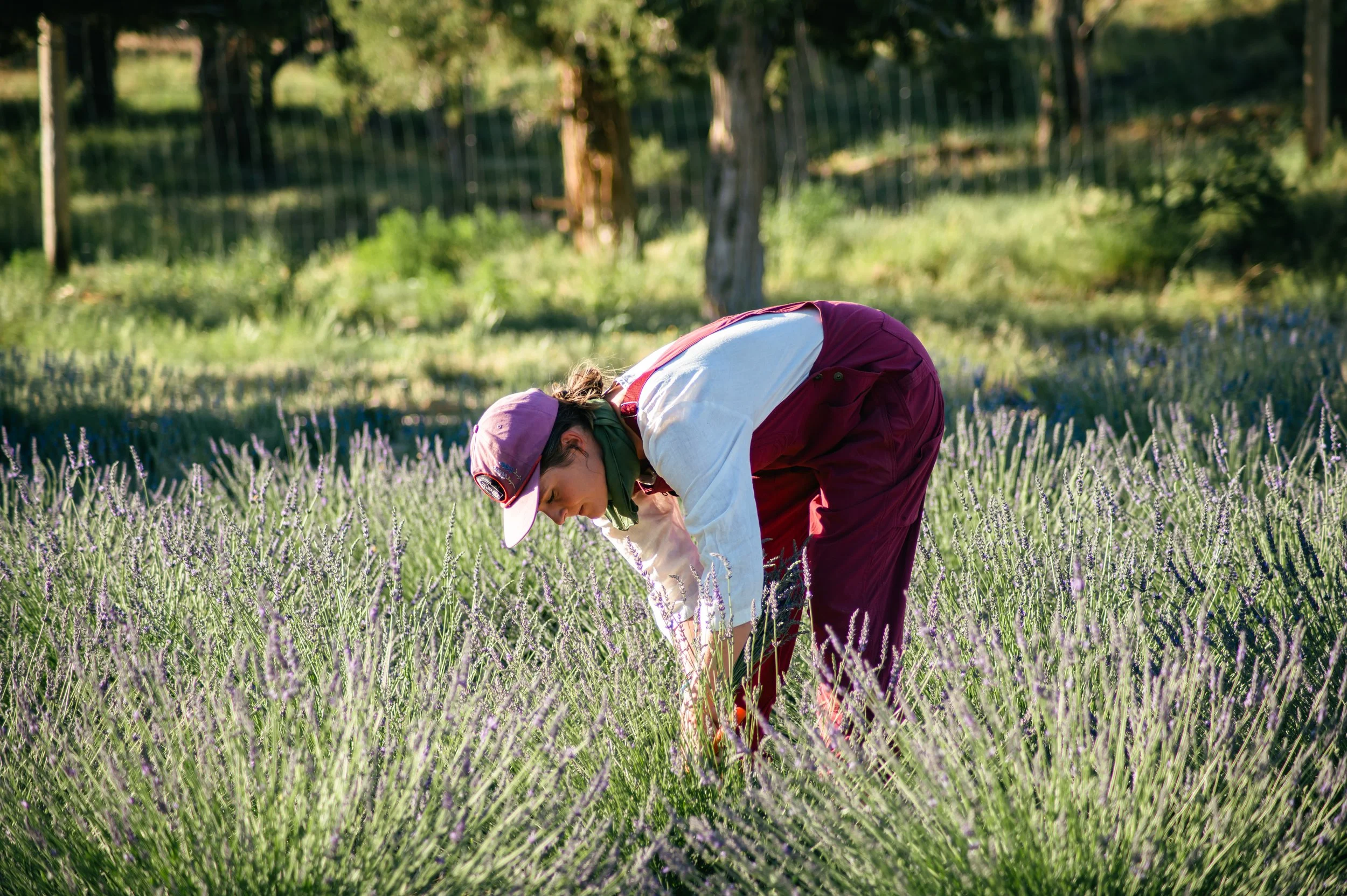Where Should I Plant Lavender?
A Grower’s Guide from Our High‑Desert Farm
If you’re dreaming of vibrant lavender blooms, bees swirling through your garden, and the calming scent of lavender wafting in the breeze—this post is for you! At Mesa Verde Lavender, our organic fields thrive at 6,800 ft altitude in Mancos, Colorado—a high‑desert climate perfect for lavender’s native Mediterranean roots. Here's how to mirror our success in your own yard.
Photo by Nathan Rist https://www.ristphoto.com/
1. Choose the Sunniest Spot
Lavender thrives in full sun, ideally 6–8 hours of direct sunlight daily. A south or southwest-facing exposure yields richer fragrance and more flowering. In hot, humid climates, a little afternoon shade can help prevent heat stress.
2. Plant in Well-Draining Soil
Lavender loves fast-draining soil — think sandy loam, gravelly texture, or even rocky spots. This is the easiest soil to grow in. At Mesa Verde Lavender we do grow in all sorts of soil, but you’ll have to attend one of our Lavender 101 workshops to get into depth with us on how to grow lavender in all kinds of soils when needed! So for now, avoid clay or overly rich beds. The ideal soil pH is between 6.5 to 8.0. If your soil is acidic, mix in some lime. Raised beds, mounds, or slopes work great where drainage is an issue.
Photo by Nathan Rist https://www.ristphoto.com/
3. Space for Airflow & Health
Give each plant at least 20–48 inches of space to allow for good airflow and sunlight. This keeps your plants dry and helps prevent disease—especially in humid environments. On a production scale like we have here at the farm, we leave 4 feet between each plant so that we have ample amount of space to harvest, weed, and maintain each plant.
4. Pick the Right Variety for Your Climate
At Mesa Verde Lavender, we grow:
English lavender (Lavandula angustifolia) – compact, fragrant, and great for culinary use and oil.
Lavandin hybrids (like ‘Grosso’) – larger plants with intense scent and excellent oil yield.
English lavender is cold-hardy (Zones 5–9), while lavandin is more heat-loving but still thrives in our high-elevation fields. Choose what works best for your zone and sun exposure.
5. Best Time to Plant
Cold climates (Zone 6 or below): Plant in late spring after the final frost.
Mild/warm climates: Fall planting allows strong roots before winter sets in.
Always wait until the soil is warm and well-drained.
6. Planting Tips
Dig a hole about twice the size of the root ball.
Mix in a bit of plant food (we recommend Yum Yum Mix) if your soil is very poor—but don’t overfeed.
Add gravel or coarse sand to improve drainage.
Place the plant at the same height it was in the pot—don’t bury the crown.
Water deeply at first, then ease off. Lavender thrives on minimal water once established.
7. Container Gardening
No good planting site? Use terracotta pots with drainage holes. Fill with a sandy, gritty mix and place in a sunny spot. Perfect for patios or small gardens. Just avoid overwatering—let that soil dry out between waterings!
Photo by Nathan Rist https://www.ristphoto.com/
8. Lavender Loves Good Company
Lavender attracts bees, butterflies, and other pollinators, and can even repel pests like beetles and grubs. Great companion plants include:
🌹 Roses – beautiful and mutually beneficial
🌿 Thyme – drought-hardy and compact
🧄 Garlic – natural pest deterrent
🌼 Yarrow – a pollinator magnet
9. Avoid High Humidity & Wet Feet
Lavender hates soggy roots. Skip mulch that traps moisture and instead use gravel or sand around the base. Make sure your planting area doesn’t stay damp overnight—especially in humid zones.
Quick Checklist: Best Spots to Plant Lavender
✔ Full sun (6–8 hrs)
✔ Well-draining, sandy or rocky soil
✔ Slightly alkaline (pH 6.5–8.0)
✔ Good airflow between plants
✔ Minimal fertilizer, minimal water
✔ Optional: Containers for poor soils or patios
Photo by Nathan Rist https://www.ristphoto.com/
At 6,800 feet in the high desert of Southwest Colorado, our organic lavender thrives with strong sun, rocky soil, dry air, and careful cultivation. We grow over 1,400 lavender plants across 15+ cultivars in fields surrounded by historic barns, open canyons, and the endless sky. We’ve learned how to make lavender flourish in the Southwest—and we love sharing that wisdom with you.
Tag us @mesaverdelavender with your own lavender photos or come visit the farm during bloom season. There’s nothing quite like the scent of lavender in the mountain air!
Love lavender? Want to grow your own or learn more about how we do it here at Mesa Verde Lavender?
Join our email list for seasonal growing tips, DIY recipes, early access to farm events, and exclusive product offers — all inspired by life on our high desert lavender farm in Mancos, Colorado.
We’re so glad you’re here. 💜
— Katie & the Mesa Verde Lavender team





